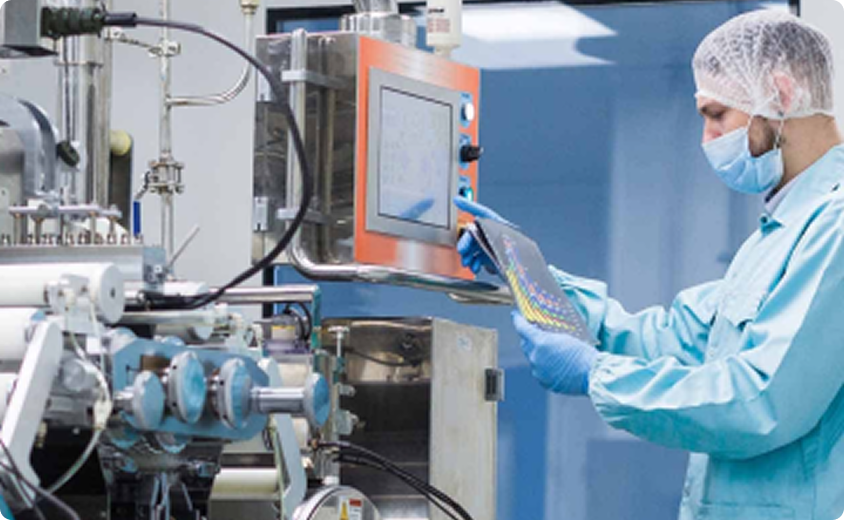With the recent major advancements in AI and machine vision technologies, the appeal of using high-accuracy automated inspection systems to improve manufacturing quality control is quite clear. But, are the up-front implementation costs worth it?
When evaluating whether or not AI inspection technology is right for your production process, it’s important to take a holistic view of all the existing costs associated with manual inspection. What’s the current financial impact of component rework and waste? How often do products need to be recalled due to missed defects? What are labor costs forecasted to be 5 years from now as the employment market changes and product demand grows?
We’ll address the direct and indirect costs of manual quality inspection, and highlight the substantial savings that automated inspection can offer manufacturers long-term.
Lowering Labor Costs
There’s no denying that manual quality inspection is an expensive proposition. In the United States, the average salary for a QC inspector now exceeds $89,000 per year, and manufacturers typically need many inspectors on staff to cover all production lines and shifts. When factoring in the cost of ongoing training and certification, as well as the inevitable annual turnover and backfill needs, manual inspection becomes a pricey operational strategy for manufacturers.
Automated inspection enables manufacturers to adopt a leaner, hybrid quality control strategy that greatly reduces manual labor costs. In this model, AI-powered systems handle the bulk of inspections, while a smaller team of human inspectors steps in only for secondary checks when necessary. This approach boosts both inspection accuracy and throughput, lowers labor expenses, and frees up remaining quality control staff to concentrate on higher-value work like root cause analysis of defects.
ROI Opportunity:
- Automated inspection systems create huge labor savings over time while providing a degree of quality control consistency and scale that manual inspection cannot match.
Reducing Rework and Waste
Manual quality inspection is repetitive and physically demanding, often leading to inspector fatigue and reduced accuracy. Inconsistencies are also common, as results can vary depending on each inspector’s training, experience, or interpretation of quality standards. This variability can cause perfectly acceptable products, especially those with minor cosmetic differences, to be incorrectly flagged, resulting in unnecessary rework or waste.
With their ultra-precise defect detection capabilities, machine inspection systems minimize the occurrence of these false rejections on the production line. Their highly trained AI algorithms detect even the most subtle variations and know whether or not they’re acceptable in the finished product.
ROI Opportunity:
- Automated inspection systems cut down significantly on manual component rework costs, as well as the manpower and energy use required for scrap material processing and waste disposal.
Compliance Assurance and Recall Prevention
Besides false rejection, the inaccuracy and inconsistency of manual inspection can also lead to the opposite problem of false acceptance — defective products passing inspection and ending up in the hands of customers. This common phenomenon poses a couple of big problems for manufacturers:
- Compliance Issues: In high-stakes, heavily regulated industries such as automotive and medical device manufacturing, product quality and compliance issues can cause serious financial and legal harm for manufacturers, including steep fines, injury settlements, and even the suspension or revocation of critical business licenses.
- Product Recalls: When a product needs to be recalled from the consumer marketplace, manufacturers are forced to incur the immense costs of gathering, replacing, and disposing of thousands or even millions of defective units, plus the ensuing legal battles and reputation damage. Case in point, there were 975 medical device recalls in the United States in 2023, resulting in 283 million recalled units and billions of dollars in financial losses.
The unparalleled accuracy of AI-based inspection systems increases manufacturer inspection quality and dramatically reduces the risk of defective products slipping through the cracks and reaching consumers. For example, a large medical device manufacturer making heart stents ran a proof of concept project comparing their standard microscope-based manual inspection process to a hybrid human-machine inspection process employing Akridata technology. The automated inspection system generated a 65% increase in component inspection quality over the manual inspection process.
ROI Opportunity:
- Automated inspection systems greatly reduce the costs associated with regulatory fines, and help manufacturers avoid the enormous expenses of product recalls. They also allow manufacturers to protect and maintain the high value of their brand reputation.
Scaling for Increased Production Efficiency
Nearly every manufacturer would like to increase the speed at which product moves through the factory and out onto the delivery trucks. But greater speed and throughput come at a cost — higher stress and fatigue levels for inspectors, reduced inspection accuracy and consistency, and more mistakes and waste. As such, manufacturers are very much limited in their ability to speed up and scale manual inspection processes.
AI inspection models, on the other hand, can be designed to handle higher speeds, allowing manufacturers to accelerate the inspection process and increase throughput without compromising quality. For example, a manufacturer of electronic components was able to achieve a 6X improvement in throughput with 1/4 the amount of manual inspection labor by implementing Akridata-powered machine vision technology.
ROI Opportunity:
- Automated inspection systems significantly lessen the required throughput throttling of manual inspection processes, allowing each production facility to operate at its full potential of speed and profitability.
Long-Term Competitive Advantage
With the accuracy and scalability of AI-based machine vision technology, significant quality improvement has never been more achievable for manufacturers. And compounded over time, the benefits of using automated inspection for quality control become even more powerful:
- Production Efficiency: The improved speed, consistency, and scale of automated inspection generates a substantial lift in overall operational efficiency for manufacturers
- Continuous Quality Improvement: The comprehensive data collection of machine vision systems facilitates advanced analytics that enable manufacturers to quickly identify defect patterns and implement corrective actions
- Market Competitiveness: Automated inspection systems provide manufacturers with greater throughput flexibility that helps them more effectively adapt to meet fluctuating market demands.
ROI Opportunity:
- Automated inspection systems speed up order fulfillment, reduce time-to-market, and cut operational costs, all factors that enable manufacturers to gain an edge over competitors and win more market share.
Future-Proof Quality Control with Automated Inspection
While the initial investment in automation technology may be significant for a manufacturer, the cost savings over time are substantial. But automated inspection isn’t just a cost-saving measure, it’s a long-term investment in quality improvement, operational excellence, and market growth.
Akridata provides the tools manufacturers need to maximize their ROI and future-proof their quality control. Our Vision Command data platform serves as a crucial intelligence layer to help manufacturers make better inspection decisions. The platform uses deep learning to accurately classify component imagery to maximize production yields and minimize defective shipments, ultimately increasing product quality, driving down operational costs, and reducing the impact of defective products.
If you’d like to further explore the potential benefits of automated quality inspection in your manufacturing environment or are looking to improve the accuracy of an existing machine vision system, reach out to our team today to schedule an exploratory conversation.
Discover how leading manufacturers are reducing defects, increasing efficiency, and cutting costs with AI-powered inspection.
Get The True Cost of Manual Inspection in Manufacturing Whitepaper



No Responses